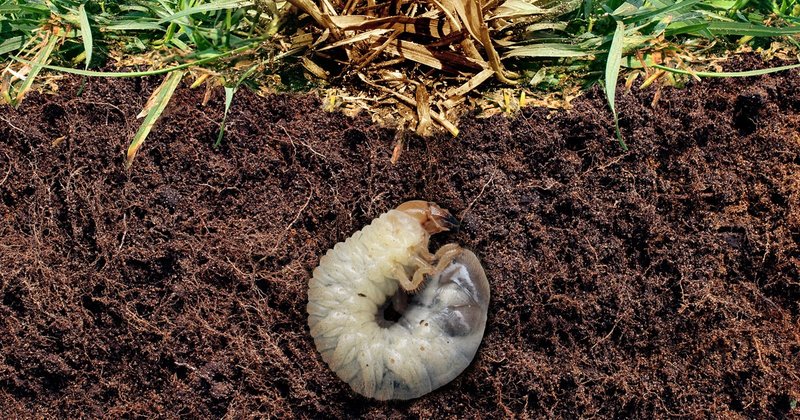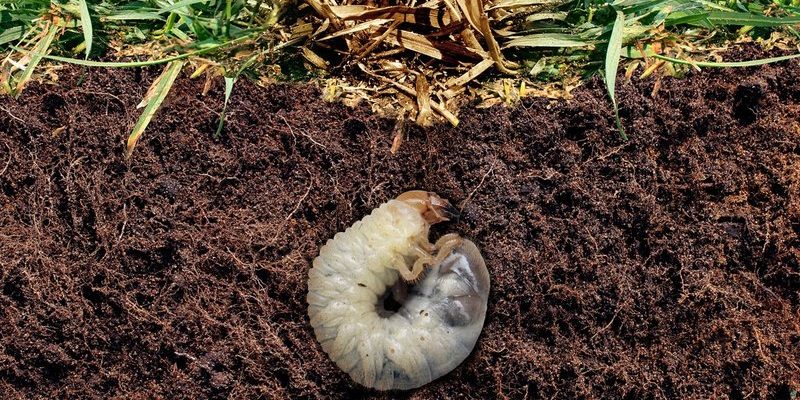
So, when should you act to get rid of these pesky pests? It’s all about timing. Applying grub control treatments at the right moment can mean the difference between a thriving lawn and one that’s struggling to survive. Let’s dive into how to spot when the time is right for grub control and explore the best ways to tackle this issue.
Understanding Grubs and Their Life Cycle
To effectively combat grubs, it’s essential to know what they are and how they behave. Grubs are the larvae of beetles that lay their eggs in the soil. Once they hatch, the young grubs start feasting on the roots of your grass, which can lead to significant damage.
Most grub species, like **Japanese beetles**, have a life cycle that typically begins in late spring or early summer. They prefer to lay their eggs in moist soil, and by late summer, the larvae—now grubs—hatch and start their destructive feeding frenzy. Knowing this cycle helps you anticipate when to apply treatments. If you can catch them early, you can prevent a lot of the damage they cause.
Signs of Grub Infestation
Being able to recognize the signs of grubs can help you act swiftly. Here are a few indicators that you might have a grub problem:
- Brown patches: Areas of your lawn that turn brown and resemble drought stress are often a sign that grubs are munching away below the surface.
- Easy to pull up grass: If your grass pulls up easily and doesn’t have many roots, grubs may have damaged the root system.
- Increased animal activity: If you notice more birds or animals digging in your lawn, they’re likely after those tasty grubs.
These signs are crucial for identifying the right time to apply grub control treatments.
The Best Time to Apply Grub Control
Timing is everything when it comes to applying grub control treatments. Ideally, you want to target them before they cause major damage, which means applying treatments at the right point in their life cycle.
For most homeowners, the best window is late spring to early summer. This is when grubs are forming, and they’re still small and vulnerable. If you can catch them during this stage, your treatment will be most effective. Applying too late—after they’ve already chewed up your roots—can lead to a less successful outcome.
Seasonal Recommendations
– **Spring:** As temperatures rise and the soil warms, grubs begin to hatch. This is your cue to apply preventative treatments.
– **Summer:** If you missed the spring window, don’t despair! Certain treatments can still work in early summer as grubs are still growing and feeding.
– **Fall:** While late summer is typically for applying preventative measures, if you see signs of grubs, you can treat in early fall. However, this is less ideal than earlier applications.
Getting your timing right helps ensure your lawn stays healthy and vibrant.
Choosing the Right Grub Control Treatment
With different treatment options available, it can be overwhelming to decide which is the best for your lawn. The two primary types of grub control treatments are *preventative* and *curative*.
– **Preventative Treatments:** These are applied before you know you have a problem. They’re designed to stop grubs from ever becoming a problem. Products with *imidacloprid* or *chlorantraniliprole* are popular choices. Usually, these are applied in late spring.
– **Curative Treatments:** These can help if you already have grubs munching away. Look for products containing *trichlorfon* or *carbaryl*. These are effective in the summer months when grubs are actively feeding.
It’s like having a security system (preventative) versus chasing away intruders (curative). Understanding your lawn’s specific needs can help you choose wisely.
Applying the Treatment: A Step-by-Step Guide
You might be wondering how to actually apply these treatments. Here’s a straightforward guide:
1. **Choose the right product:** Based on whether you’re going preventative or curative.
2. **Read the label:** Always check specific instructions and recommended application rates.
3. **Prepare your lawn:** Water your lawn lightly before applying the treatment to ensure it penetrates the soil.
4. **Apply evenly:** Use a spreader for even distribution, especially if you’re using granules.
5. **Water again:** After applying, water your lawn to help the treatment soak into the soil.
Following these steps will maximize your chances of success.
Maintaining Your Lawn After Grub Treatment
Once you’ve dealt with the grubs, the work isn’t over yet. Maintaining a healthy lawn afterward is crucial for preventing future infestations. Here are some tips to help:
- Regular watering: Lawns need consistent moisture, especially during dry spells.
- Proper mowing: Keep your grass at the recommended height for your specific type. This helps promote root growth.
- Soil health: Use organic compost or fertilizers to strengthen your grass and soil. Healthy soil can often fend off pests better.
By nurturing your lawn, you create an environment that’s less appealing to grubs and other pests.
Considering Professional Help
Sometimes, despite your best efforts, you may find yourself overwhelmed. If you’ve tried treatments and still face issues, calling in the professionals might be a good option. Lawn care companies can offer tailored treatments based on the specific conditions of your yard. They have the tools and expertise to tackle persistent grub problems.
Wrapping Up: Healthy Lawns Are Happy Lawns
In the end, keeping your lawn grub-free is all about being proactive. Knowing when to apply grub control treatments can save you a lot of heartache later. By understanding the grub life cycle, recognizing signs of infestation, and selecting the right treatment at the right time, you’re well on your way to a healthy lawn.
Remember, this isn’t a one-time effort. A little care goes a long way. With proper lawn maintenance, you can enjoy a vibrant, green space that stands strong against pesky grubs. Happy gardening!

